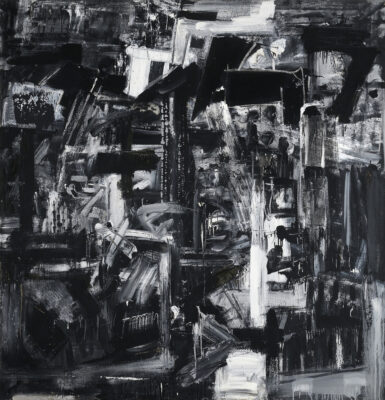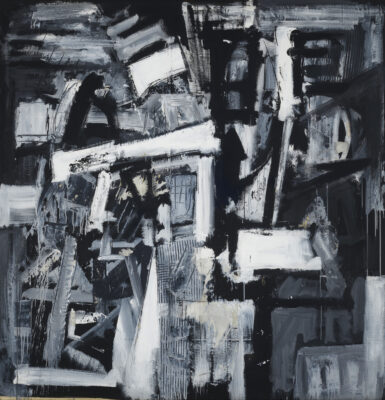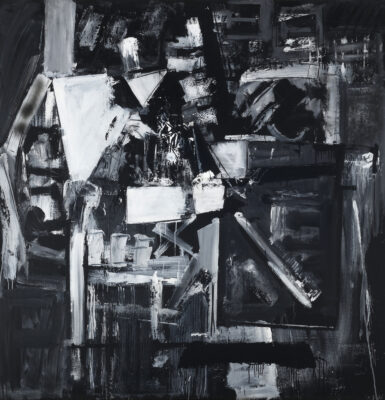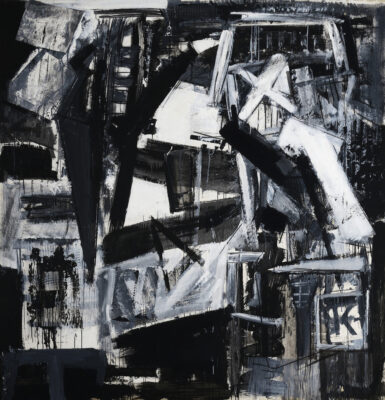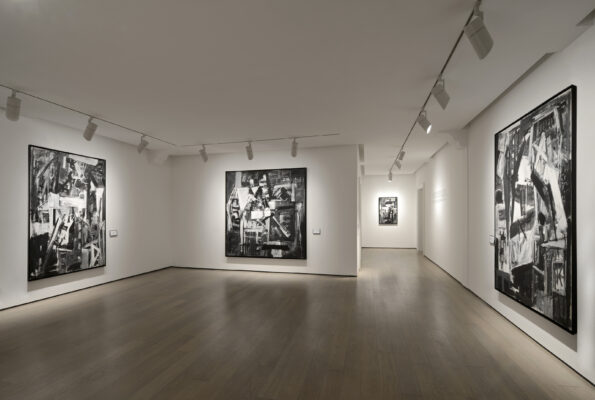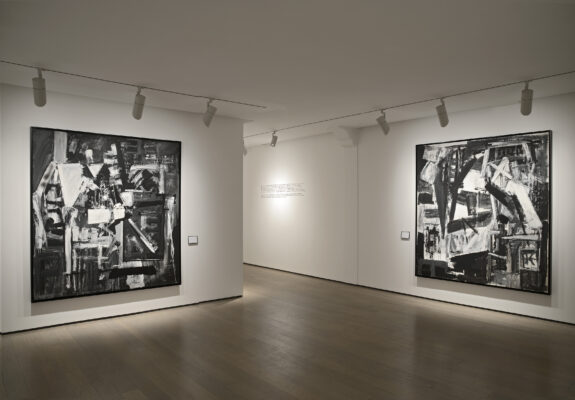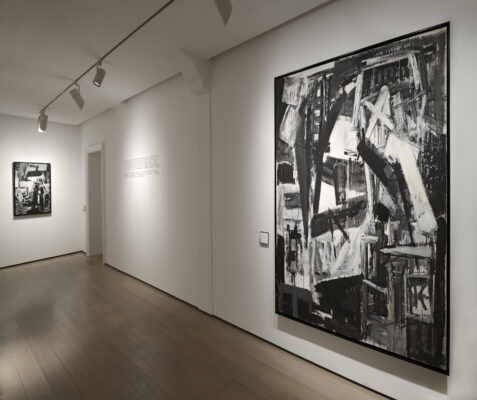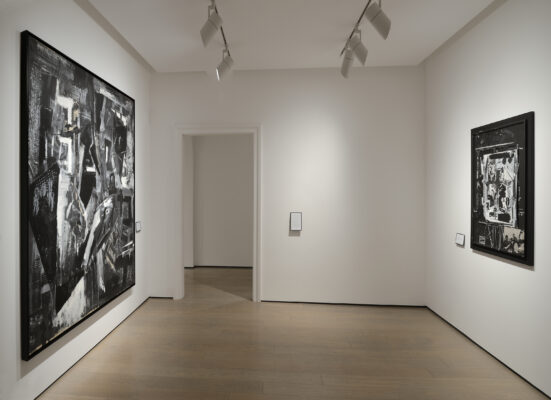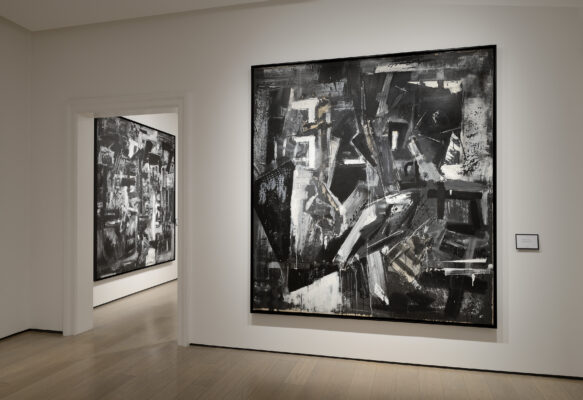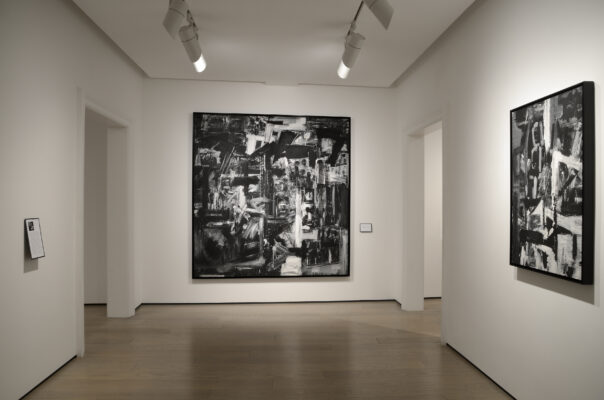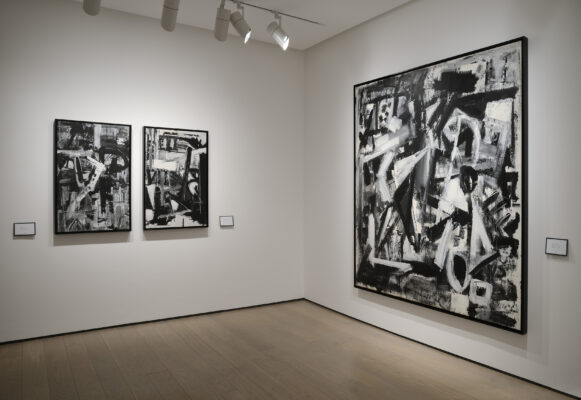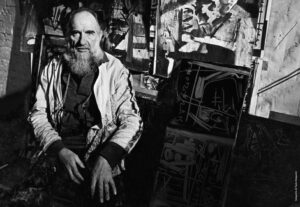Home / Exhibitions / Emilio Vedova De America paintings 1976-1977
Emilio Vedova, De America
paintings 1976-1977
in collaboration with Fondazione Emilio e Annabianca Vedova
14.12.2013 — 31.03.2014
Emilio Vedova
De America
in collaboration with Fondazione Emilio e Annabianca Vedova
14.12.2013 - 31.03.2014Show introduction
De America, a series of some fifty paintings on paper and canvas created by Emilio Vedova in Venice between 1976 and 1977, is the subject of the exhibition organized by the Galleria dello Scudo together with the Fondazione Emilio e Annabianca Vedova. The title of the works, all in black and white, is an evident allusion to the artist's experiences in the United States, from his first show there in 1951 to the following twenty-five years when he built relationships with universities, public institutions, and exponents of American culture; he also held numerous shows in Canada to Latin America, and received many prestigious official recognitions. Already in the 1940s he was a protagonist of the Italian art avant-garde in a Venice that was to become particularly active after the revival of the historical Biennale and with the presence of such important figures as Peggy Guggenheim. Vedova soon became part of a circuit that went far beyond the national confines.
If immediately after the war the Rome-New York axis encouraged a dialog between the new examples of American Abstract Expressionism and parallel European art activities, similarly direct communications were established between Venice and America. The Biennale exhibitions were a rallying point for internationally important experts and critics who had been called to take part as jurors and committee members: one example of many was James Johnson Sweeney, from 1952 the director of the Solomon R. Guggenheim Museum. Industrious collectors came to Venice to acquire the best proposals of the time. The Biennale authorities also undertook an intense activity of promotion in South American countries as well as North European ones.
In this context Vedova had a leading role, as is confirmed by his success at the São Paulo Biennales in Brazil in 1951, and 1953-1954, and at those in Venice from 1950 onwards, amongst which mention should be made of the 1960 edition where an international commission, presided over by the British critic Herbert Read, unanimously awarded him the first prize for Italian painting.
So to present De America in this exhibition offers us an occasion for reconstructing the steps of an "American" itinerary in which Vedova's painting was influenced by the radical transformations which, above all in the 1960s and 1970s, deeply affected the country's social context.
In New York, after his solo show at the Catherine Viviano Gallery in February 1951, Vedova came to be considered the most important Italian painter of the time; the Solomon R. Guggenheim Foundation Award was conferred on him in 1956, the same year a work of his was bought by Blanchette Rockefeller for the Museum of Modern Art. In the meantime, in 1955, he had participated for the first time at the Carnegie Institute, Pittsburg, where he exhibited Spazio inquieto n. 4, which was later acquired by Giuseppe Panza di Biumo. His work was also to be seen in various group shows in the States and entered such important collections as that of Stanley J. Seeger Jr. Later he was invited to hold a series of lessons at universities in Washington, in 1965, and then in Philadelphia, Chicago, Cleveland, and Detroit. He then went on a long journey to "deserts, canyons, Indian reserves, and the black and white ghettoes of the immense cities".
For the Italian pavilion at the 1967 Montreal Expo, Vedova created Spazio/Plurimo/Luce, a large-scale installation comprised of a complex, simultaneous system of projections through glass tiles made by the Venini glassworks in Murano. The strong and even explosive problems of the times, added to his readiness to face up to the contradictory experiences of human nature and society, led him to experiment with unconventional techniques. In the very period that, at Berkeley University, California, the epicenter of protests which were later to be violently suppressed, he held a series of memorable lectures about "artists today" and their function. So his involvement with university life, which was to continue in the following decades (he held his third series of lectures in 1973), together with his friendships with such American protagonists of the cultural context as Allen Ginsberg and Dore Ashton, gave him the opportunity for a constant update on what was happening in the USA, torn as it was by protests against the Vietnam war, by racial problems, and by strong internal dissent.
These events deeply influenced Vedova's ideas about the relationship between art and society, a relationship he was completely immersed in. But after his geometrical works of 1946-1950, and his increasing and powerful working-out of interests ranging from those of Ciclo della protesta, 1953, to a deepening investigation into the relationship between painting and space (Intolleranza ’61, the Plurimi of the Absurdes Berliner Tagebuch, 1964 up to Spazio/Plurimo/Luce, 1967), Vedova changed direction completely.
Having been anticipated by his intense print-making activity from the beginning of the1970s, the De America series marks a decided return to painting, one that, after experiments with other techniques, evokes strong analogies between Venice and the slums of New York. All this came together in the large-scale canvases and works on paper brought together in Verona; in these the composition seems to be organized through force-lines even sharper than those of the past: the large and vigorous brushstrokes intersect following to precise indications; the application of black and white has an absolute rigor, without any concessions to color.
